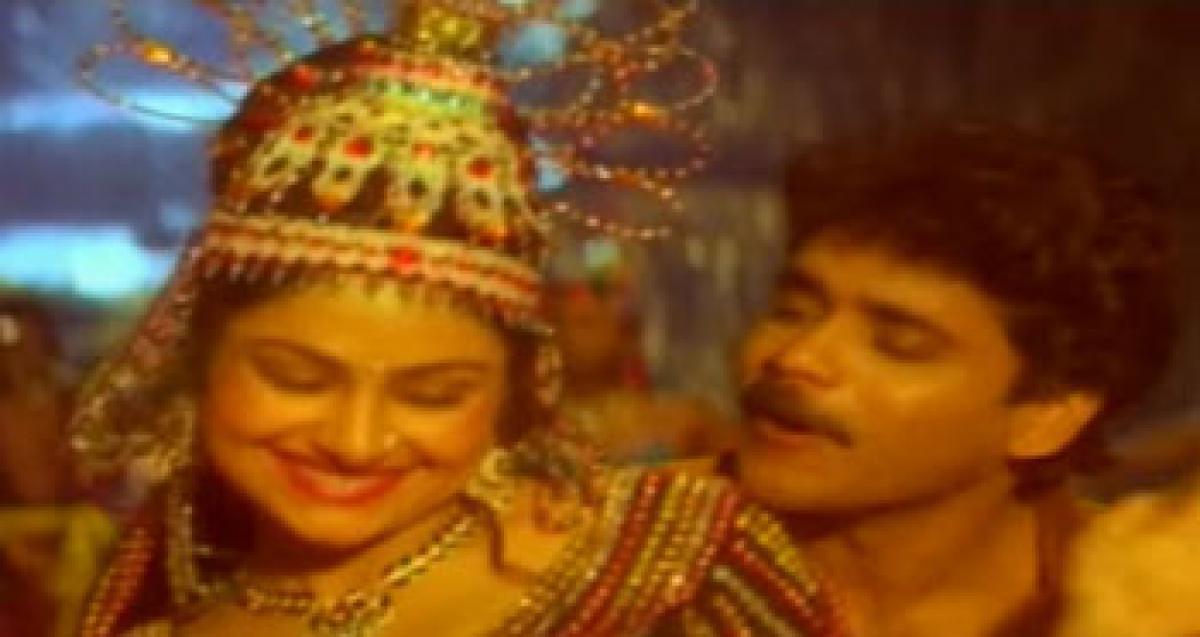Live
- Nadendla finds PDS rice ready for smuggling in rice mill
- Man arrested for murder of 44-year-old woman
- BCs are backbone of NDA govt in AP: Savitha
- Three held for rice pulling business, police recover Rs. 25L
- TGCSB nabs fraudsters for cheating businessman of Rs.7.19 cr
- Revanth govt dampened festive spirit, fumes KTR
- Ratan Tata to be cremated with full state honours: Maharashtra CM
- 6-yr-old raped, murdered in Punjab’s Ludhiana
- CM Revanth Reddy Expresses Condolences on the Passing of Ratan Tata
- SVU performs well in Times Higher Education World University Rankings
Just In

Among the pet theories of filmmakers, this one takes the cake. It goes thus: When you remake a hit film from another language, you are insured to a large extent as it has already been successful elsewhere.
 Among the pet theories of filmmakers, this one takes the cake. It goes thus: When you remake a hit film from another language, you are insured to a large extent as it has already been successful elsewhere.
Among the pet theories of filmmakers, this one takes the cake. It goes thus: When you remake a hit film from another language, you are insured to a large extent as it has already been successful elsewhere.
Just as there is no guarantee about what the public would end up liking or not, this funda too has been tested time and again at the altar of the big BO. The film – ‘Neti Siddhartha’ - starring Nagarjuna, Shobana and Ayesha Jhulka, from where this week’s song has been taken up for a review- is one such apt example.
It was considered the Telugu equivalent of the 1975 smasher Hindi film ‘Dharmatma’, starring legendary Feroz Khan and a host of big names like Hema Malini, Rekha, Danny, Prem Nath, etc. This local version, released 15 years later, however, is not one the Akkineni would like to recall fondly, as far its level of acceptance among his fans.
The original, with its scale, mounting and dazzling cinematography in the rugged land of Afghanistan and horse fighting in the harsh terrains is still fondly remembered for the brawn and the beauties of the lead pairs. Kalyanji-Anandji came up with a series of hit numbers utilising the services of Mukesh and Kishore Kumar, a Khan favourite, which are still heard with relish even today.
The nativity factor of the Telugu version was considered a big minus at that time apart from the routine treatment to the film, which did it in. It had one big USP however: engaging the services of the iconic Laxmikant-Pyarelal (L-P) to score the music for the film which worked well. It is to be mentioned here that this duo which went on to score for more than 600 films in a career of more than four decades, scored only for this Telugu film alone in their foray down south.
“Divi lo lahiri, Giri kona pandhiri” begins the number which sees a cave setting in which the song is played out entirely. The typical tribal lilt and pitch with which the song begins soon picks up a good clip as SPB belts the first line, to a frenetic table accompaniment, vintage L-P style!
 The lighting is suitably hazy as the dreamy tone to the scene that unfolds onscreen has a lot of people gyrating. Jhulka, then an 18-year-old belle, represented a routine that had set in by then- Hindi film imports to accompany or replace the regional heroines.
The lighting is suitably hazy as the dreamy tone to the scene that unfolds onscreen has a lot of people gyrating. Jhulka, then an 18-year-old belle, represented a routine that had set in by then- Hindi film imports to accompany or replace the regional heroines.
The orchestration, a wavy combination of bass and beat with a metallic tone added is just about adequate to keep the tempo going. Nagarjuna, never known for great dance moves, slides around the frame energetically enough, as the heroine takes care of the rest.
More than half way into the song, L-P gets in the Caribbean swing and music as an interlude to highlight the special mood of the song. “Maa gundellallo surya chandrulu, maa kantiki reppalu ee manchi manasulu” croons the heroine in S Janaki’s voice, which underscores the ambience.
The hero retorts: “Meerega Valmiki Shabari gurutulu” as the chorus raises the pitch “Banjara, Senjara, Bhale Maja”…. From here on, the lyrics of the first stanza gets repeated, with the speed of the song hustling towards the climax. The Hindi film musicians, playing up to their strengths, serve a hummable hit thus.
By:K Naresh Kumar

© 2024 Hyderabad Media House Limited/The Hans India. All rights reserved. Powered by hocalwire.com







